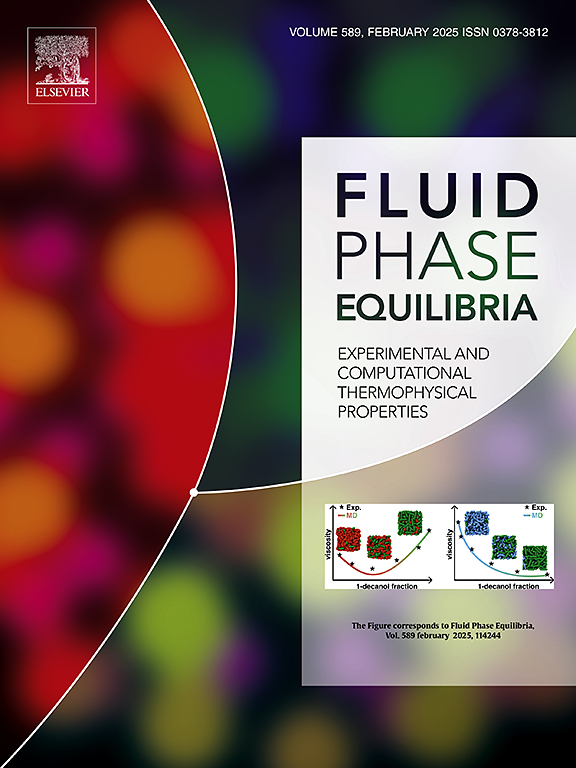An azeotrope in the desert
IF 2.8
3区 工程技术
Q3 CHEMISTRY, PHYSICAL
引用次数: 0
Abstract
One of the most exciting applications of thermodynamics in chemical industry is the separation of azeotropes. The azeotrope in the system tetrahydrofuran — water seems to be an easy one, as it can be separated in two columns without the help of a selective agent by pressure-swing distillation. The topic of this paper is a case where this principle was applied. As well, a number of other components had to be separated so that two further distillation columns had to be provided. To everyone’s surprise, the water content could often not be kept below the target value of 300 ppm so that the product was off-spec. The various possible reasons were regarded. While almost everyone concluded that the azeotropic separation did not work, some thermodynamic considerations suggested that the pressure-swing distillation seemed to do its job. To find the reason of the failure, a hygrometer had been calibrated in a way that it could instantaneously indicate the water content in the tetrahydrofuran. It could be proven that the azeotrope of the tetrahydrofuran — water was properly separated. The reason for the moisture in the product could be located downstream the azeotropic separation and easily been corrected.
沙漠中的共沸物
热力学在化学工业中最令人兴奋的应用之一是共沸物的分离。四氢呋喃-水体系中的共沸物似乎是一种容易的共沸物,因为它可以通过变压蒸馏在两柱中分离而不需要选择剂的帮助。本文的主题是应用这一原则的一个案例。此外,许多其他组分必须分离,因此必须提供两个进一步的蒸馏塔。令所有人惊讶的是,水的含量往往不能保持在300 ppm的目标值以下,因此产品不合规格。考虑了各种可能的原因。虽然几乎所有人都认为共沸分离不起作用,但从热力学角度考虑,变压蒸馏似乎起了作用。为了找出故障的原因,他们校准了一个湿度计,使其能够立即显示四氢呋喃中的水含量。结果表明,四氢呋喃-水的共沸物得到了很好的分离。产品中水分的原因可以定位在共沸分离的下游,并且易于纠正。
本文章由计算机程序翻译,如有差异,请以英文原文为准。
求助全文
约1分钟内获得全文
求助全文
来源期刊

Fluid Phase Equilibria
工程技术-工程:化工
CiteScore
5.30
自引率
15.40%
发文量
223
审稿时长
53 days
期刊介绍:
Fluid Phase Equilibria publishes high-quality papers dealing with experimental, theoretical, and applied research related to equilibrium and transport properties of fluids, solids, and interfaces. Subjects of interest include physical/phase and chemical equilibria; equilibrium and nonequilibrium thermophysical properties; fundamental thermodynamic relations; and stability. The systems central to the journal include pure substances and mixtures of organic and inorganic materials, including polymers, biochemicals, and surfactants with sufficient characterization of composition and purity for the results to be reproduced. Alloys are of interest only when thermodynamic studies are included, purely material studies will not be considered. In all cases, authors are expected to provide physical or chemical interpretations of the results.
Experimental research can include measurements under all conditions of temperature, pressure, and composition, including critical and supercritical. Measurements are to be associated with systems and conditions of fundamental or applied interest, and may not be only a collection of routine data, such as physical property or solubility measurements at limited pressures and temperatures close to ambient, or surfactant studies focussed strictly on micellisation or micelle structure. Papers reporting common data must be accompanied by new physical insights and/or contemporary or new theory or techniques.
 求助内容:
求助内容: 应助结果提醒方式:
应助结果提醒方式:


